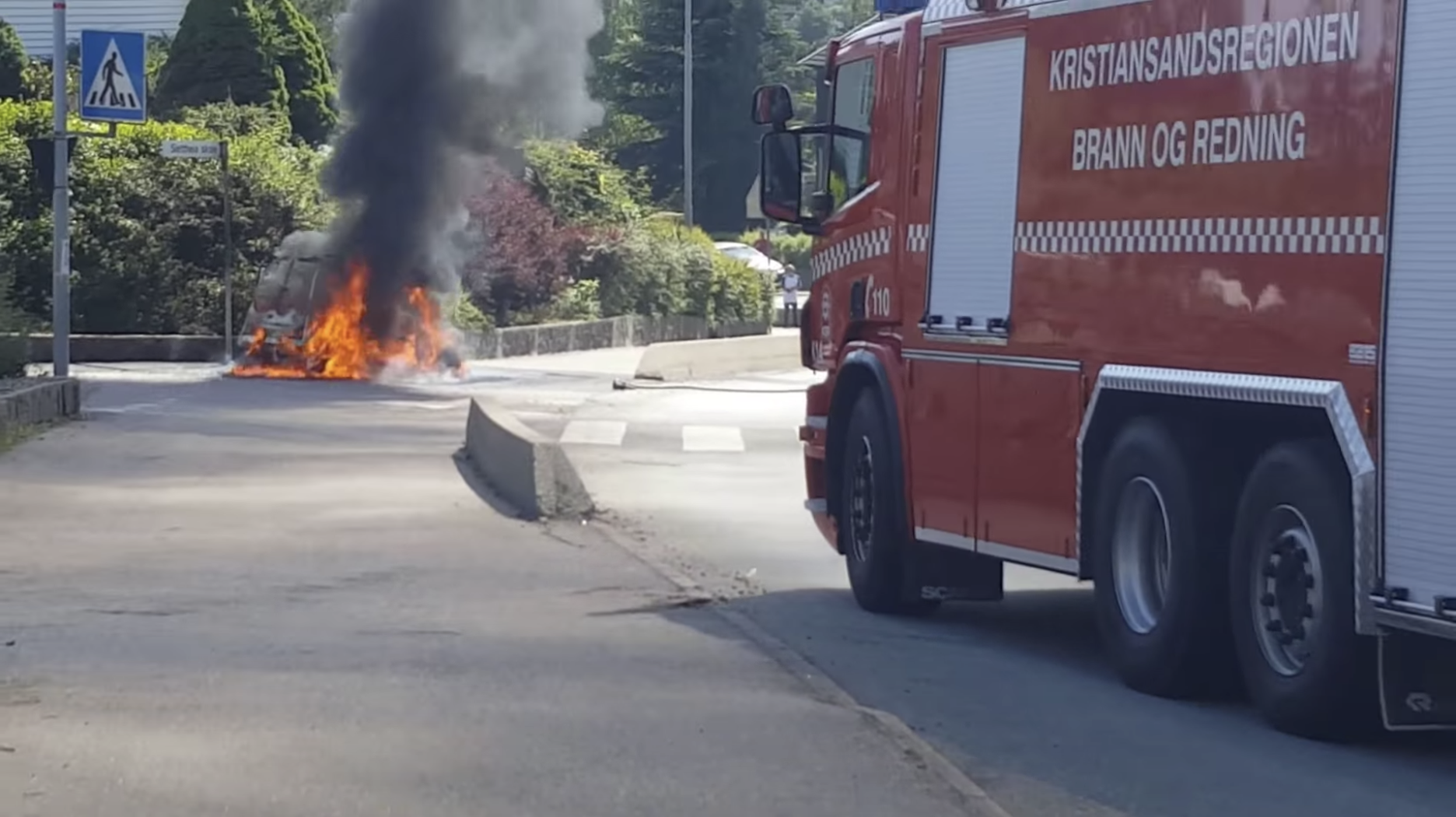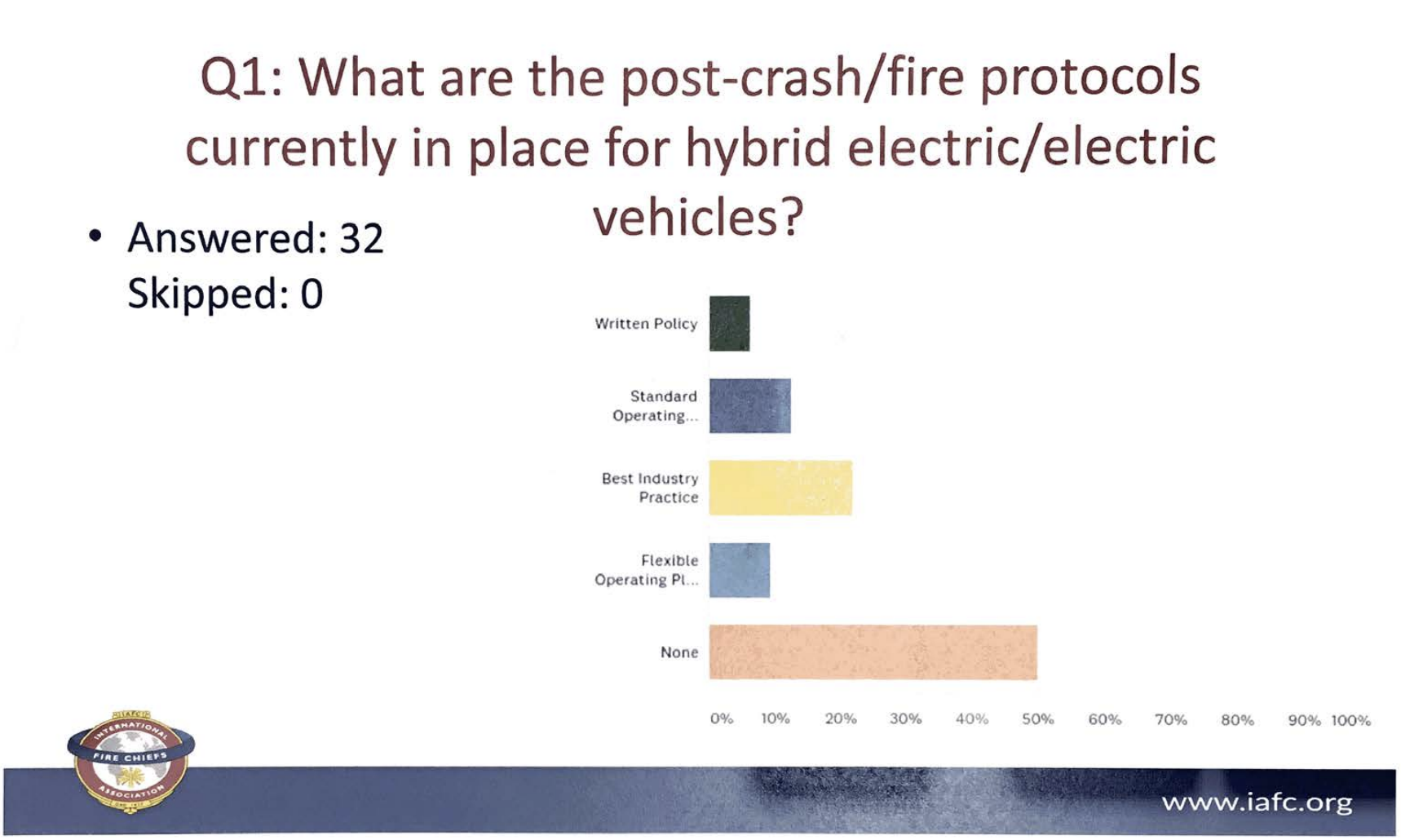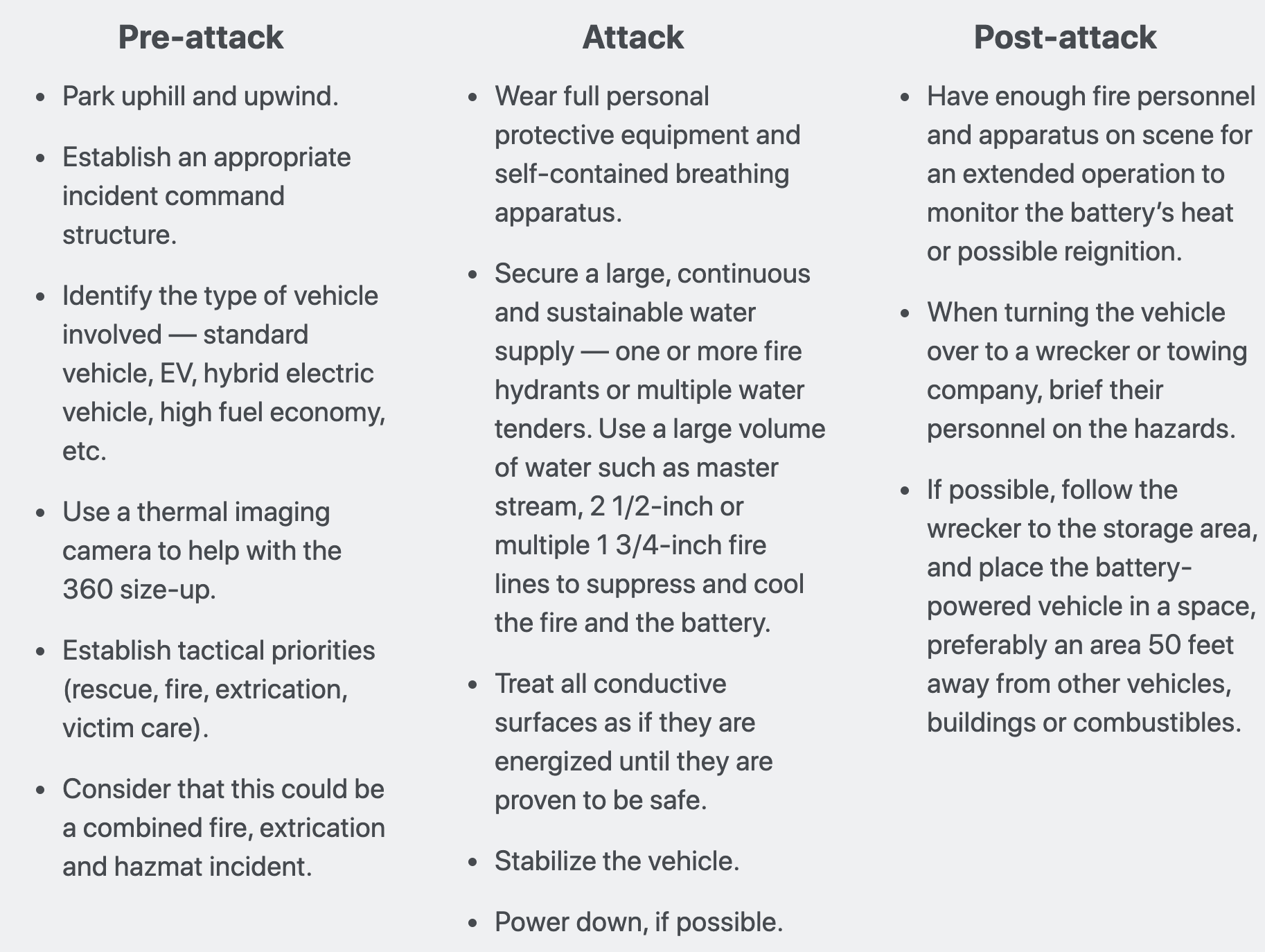

News
EV fires are a major weakpoint for Fire Departments: NTSB report
The National Transportation Safety Board, better known as the NTSB, has released a new study showing that around 50% of fire departments are not readily prepared to handle an electric vehicle fire.
The NTSB is a United States government agency that is responsible for the investigation of civil transportation accidents. Some of the most notorious cases they have analyzed are US Airways Flight 1549, better known as “the Miracle on the Hudson,” and the Attacks on the World Trade Center and the Pentagon on 9/11 aircraft used were domestic commercial flights.
The NTSB is also responsible for analyzing the preparedness of various agencies across the country in an accident, which brought on concerns about how ready fire departments were when an EV catches fire.
While this is a somewhat rare occurrence based on information published in Tesla’s Safety Report, which revealed one of the company’s EVs catches fire once every 175 million miles, it is still important to know how to extinguish one if it were to occur. With the evergrowing presence of EVs on the road, fire departments must be prepared for a fire.
The investigation surveyed 32 fire departments in 2018 and analyzed their readiness for handling an EV fire. While the investigation took place over two years ago, the NTSB results were just published earlier this week.
The government agency’s study revealed that 50% of the 32 fire departments had no “post-crash/fire protocols currently in place for hybrid electric/electric vehicles.” 6.25% operated under “written policy,” 12.5% under “Standard Operating Procedure,” 21.88% under “Best Industry Practice,” and 9.38% under “Flexible Operating Plans.” The NTSB also indicated that the majority of the departments surveyed are utilizing “general tactics that can be applied to hybrid electric/electric vehicles or other similar incidents.”

However, the Federal Emergency Management Agency, or FEMA, states that handling an EV fire requires additional knowledge and a dedicated plan of attack to decrease the cells’ likelihood of causing additional damage when ignited.
EV fires are a different animal because of the materials used in the cars. “Electric vehicle fires can exceed 5,000 F. Applying water or foam may cause a violent flare-up as the water molecules separate into explosive hydrogen and oxygen gases,” FEMA writes on their website.

As electric vehicles continue to become more prevalent on today’s roads, agencies must prepare for these situations properly. While EV fires are not necessarily a common occurrence, that does not mean that departments should not prepare for the worst-case scenarios that they are often confronted with spontaneously.
Proper training and response could save multiple lives in the event of an EV fire. As electric cars increase their market share in the United States, it is time for fire departments to learn the proper precautions and handling of these rare scenarios.
The full report from the NTSB is available below.
Survey of Fire Departments Conducted by IAFC and NVFC-Master by Joey Klender on Scribd

News
Tesla starts showing how FSD will change lives in Europe
Local officials tested the system on narrow country roads and were impressed by FSD’s smooth, human-like driving, with some calling the service a game-changer for everyday life in areas that are far from urban centers.

Tesla has launched Europe’s first public shuttle service using Full Self-Driving (Supervised) in the rural Eifelkreis Bitburg-Prüm region of Germany, demonstrating how the technology can restore independence and mobility for people who struggle with limited transport options.
Local officials tested the system on narrow country roads and were impressed by FSD’s smooth, human-like driving, with some calling the service a game-changer for everyday life in areas that are far from urban centers.
Officials see real impact on rural residents
Arzfeld Mayor Johannes Kuhl and District Administrator Andreas Kruppert personally tested the Tesla shuttle service. This allowed them to see just how well FSD navigated winding lanes and rural roads confidently. Kruppert said, “Autonomous driving sounds like science fiction to many, but we simply see here that it works totally well in rural regions too.” Kuhl, for his part, also noted that FSD “feels like a very experienced driver.”
The pilot complements the area’s “Citizen Bus” program, which provides on-demand rides for elderly residents who can no longer drive themselves. Tesla Europe shared a video of a demonstration of the service, highlighting how FSD gives people their freedom back, even in places where public transport is not as prevalent.
What the Ministry for Economic Affairs and Transport says
Rhineland-Palatinate’s Minister Daniela Schmitt supported the project, praising the collaboration that made this “first of its kind in Europe” possible. As per the ministry, the rural rollout for the service shows FSD’s potential beyond major cities, and it delivers tangible benefits like grocery runs, doctor visits, and social connections for isolated residents.
“Reliable and flexible mobility is especially vital in rural areas. With the launch of a shuttle service using self-driving vehicles (FSD supervised) by Tesla in the Eifelkreis Bitburg-Prüm, an innovative pilot project is now getting underway that complements local community bus services. It is the first project of its kind in Europe.
“The result is a real gain for rural mobility: greater accessibility, more flexibility and tangible benefits for everyday life. A strong signal for innovation, cooperation and future-oriented mobility beyond urban centers,” the ministry wrote in a LinkedIn post.
News
Tesla China quietly posts Robotaxi-related job listing
Tesla China is currently seeking a Low Voltage Electrical Engineer to work on circuit board design for the company’s autonomous vehicles.

Tesla has posted a new job listing in Shanghai explicitly tied to its Robotaxi program, fueling speculation that the company is preparing to launch its dedicated autonomous ride-hailing service in China.
As noted in the listing, Tesla China is currently seeking a Low Voltage Electrical Engineer to work on circuit board design for the company’s autonomous vehicles.
Robotaxi-specific role
The listing, which was shared on social media platform X by industry watcher @tslaming, suggested that Tesla China is looking to fill the role urgently. The job listing itself specifically mentions that the person hired for the role will be working on the Low Voltage Hardware team, which would design the circuit boards that would serve as the nervous system of the Robotaxi.
Key tasks for the role, as indicated in the job listing, include collaboration with PCB layout, firmware, mechanical, program management, and validation teams, among other responsibilities. The role is based in Shanghai.
China Robotaxi launch
China represents a massive potential market for robotaxis, with its dense urban centers and supportive policies in select cities. Tesla has limited permission to roll out FSD in the country, though despite this, its vehicles have been hailed as among the best in the market when it comes to autonomous features. So far, at least, it appears that China supports Tesla’s FSD and Robotaxi rollout.
This was hinted at in November, when Tesla brought the Cybercab to the 8th China International Import Expo (CIIE) in Shanghai, marking the first time that the autonomous two-seater was brought to the Asia-Pacific region. The vehicle, despite not having a release date in China, received a significant amount of interest among the event’s attendees.
Elon Musk
Elon Musk and Tesla AI Director share insights after empty driver seat Robotaxi rides
The executives’ unoccupied tests hint at the rapid progress of Tesla’s unsupervised Robotaxi efforts.

Tesla CEO Elon Musk and AI Director Ashok Elluswamy celebrated Christmas Eve by sharing personal experiences with Robotaxi vehicles that had no safety monitor or occupant in the driver’s seat. Musk described the system’s “perfect driving” around Austin, while Elluswamy posted video from the back seat, calling it “an amazing experience.”
The executives’ unoccupied tests hint at the rapid progress of Tesla’s unsupervised Robotaxi efforts.
Elon and Ashok’s firsthand Robotaxi insights
Prior to Musk and the Tesla AI Director’s posts, sightings of unmanned Teslas navigating public roads were widely shared on social media. One such vehicle was spotted in Austin, Texas, which Elon Musk acknowleged by stating that “Testing is underway with no occupants in the car.”
Based on his Christmas Eve post, Musk seemed to have tested an unmanned Tesla himself. “A Tesla with no safety monitor in the car and me sitting in the passenger seat took me all around Austin on Sunday with perfect driving,” Musk wrote in his post.
Elluswamy responded with a 2-minute video showing himself in the rear of an unmanned Tesla. The video featured the vehicle’s empty front seats, as well as its smooth handling through real-world traffic. He captioned his video with the words, “It’s an amazing experience!”
Towards Unsupervised operations
During an xAI Hackathon earlier this month, Elon Musk mentioned that Tesla owed be removing Safety Monitors from its Robotaxis in Austin in just three weeks. “Unsupervised is pretty much solved at this point. So there will be Tesla Robotaxis operating in Austin with no one in them. Not even anyone in the passenger seat in about three weeks,” he said. Musk echoed similar estimates at the 2025 Annual Shareholder Meeting and the Q3 2025 earnings call.
Considering the insights that were posted Musk and Elluswamy, it does appear that Tesla is working hard towards operating its Robotaxis with no safety monitors. This is quite impressive considering that the service was launched just earlier this year.








